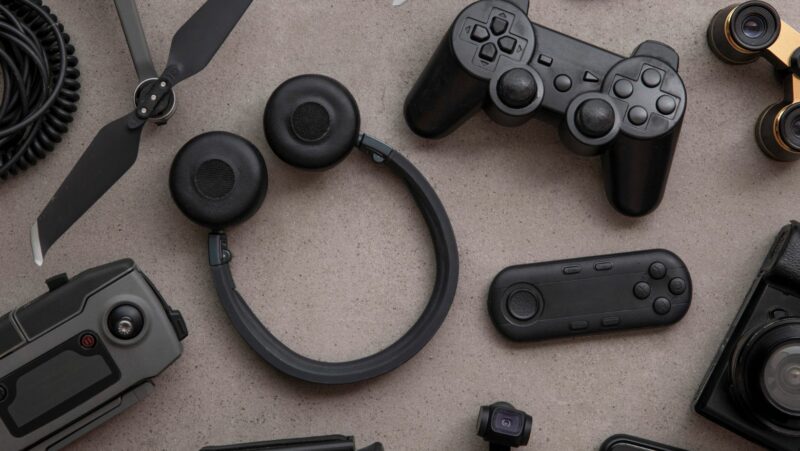In the fast-paced world we live in, gadgets have become our constant companions. They’re everywhere – in our pockets, on our desks, even on our wrists. But what exactly are gadgets? What makes a device a gadget?
In this article, I’ll delve into the fascinating world of gadgets. We’ll explore their definition, their history, and their impact on our lives. This isn’t just about smartphones and laptops, but about the myriad of innovative devices that shape our world every day. So, let’s embark on this journey to understand the intriguing world of gadgets.
Thanks to technological advances, gadgets’ role in our daily lives becomes increasingly pivotal. With an understanding of their definition, history and everyday use, we’re prepared to delve deeper into the concept of gadgets.
What are Gadgets
 In the 21st century, gadgets refer to small mechanical or electronic devices with a practical use, manufactured for a specific task. They’re often known for their smart and compact design making them easy to use. An example of this is smartphones, albeit devices like digital watches, MP3 players, or portable game consoles also fit the bill. Achieving many feats, from making communication effortless to providing endless entertainment, it’s evident that life with them seems almost unimaginable.
In the 21st century, gadgets refer to small mechanical or electronic devices with a practical use, manufactured for a specific task. They’re often known for their smart and compact design making them easy to use. An example of this is smartphones, albeit devices like digital watches, MP3 players, or portable game consoles also fit the bill. Achieving many feats, from making communication effortless to providing endless entertainment, it’s evident that life with them seems almost unimaginable.
Historical Perspective: How Gadgets Came to Be
Gadgets’ journey commences from simple to complex. Initially, term ‘gadget’ didn’t connote advanced technology. It originated during the Industrial Revolution, referring to any sought of small useful tool or mechanism. The Swiss Army knives of the 19th century represent an example of a historical gadget. Yet, with technological progress, the definition evolved over time.
After World War II, gadgets morphed from simple mechanical devices to intricate pieces of technology. The introduction of gadgets like transistor radios made its impact felt worldwide. They revolutionized the way individuals interacted, communicated, and entertained themselves.
Fast forward to the 21st century, and we find ourselves surrounded by high-tech gadgets such as smartphones, laptops, digital watches, and others. Every year, a wide variety of new and innovative gadgets are launched, representing the advances in technology and their influence on human life.
Key Components of a Gadget
In continuing with our exploration of gadgets, let’s deep dive into their core components. Every modern gadget, from your everyday smartphone to the highly sophisticated drones, comprises two crucial parts – hardware and software.
The Hardware: Physical Elements of Gadgets
 Hardware underscores the tangible components of a gadget – the parts you can touch, see, and feel. For instance, in a smartphone, hardware includes the screen, battery, buttons, camera lens, and internal elements like the processor and the memory chips.
Hardware underscores the tangible components of a gadget – the parts you can touch, see, and feel. For instance, in a smartphone, hardware includes the screen, battery, buttons, camera lens, and internal elements like the processor and the memory chips.
Every piece of hardware has a specific role. The processor performs calculations and executes commands, making it the brain of the gadget. Memory chips, both RAM and ROM, store essential data. Think of RAM as a workspace that temporarily holds data for ongoing tasks, while ROM permanently retains critical operating instructions. The camera captures photos, and the screen displays visual data.
The Software: The Invisible Mechanisms
Software, on the other hand, is the intangible aspect of a gadget – the sequences of instructions that control the hardware and enable a gadget’s functionalities. It encompasses everything from the operating system that runs your phone, such as Android or iOS, through to the applications that perform specific tasks.
Take, for instance, the Facebook app. This software provides an interactive interface enabling you to connect to the Facebook server and interact with other users. Every tap or swipe you make on the screen tells the hardware to perform a specific task, dictated by the software’s instructions. All these active interactions drive a gadget’s capabilities, thus bringing the hardware to life and making your device functional and useful.
So, from the tangible hardware to the invisible software, all of them play a significant role in the complete functioning of a gadget. Without the harmony of these parts, a gadget would lose its utility and purpose. This fine balance between the physical elements and the invisible mechanisms highlights the unrivaled sophistication of modern gadgets and underscores their pivotal impact on our lives.




